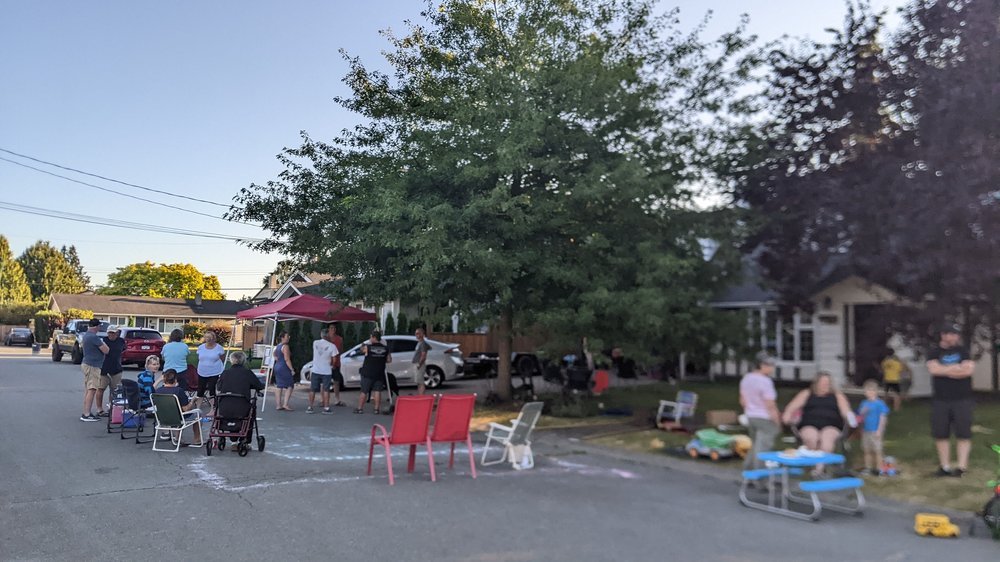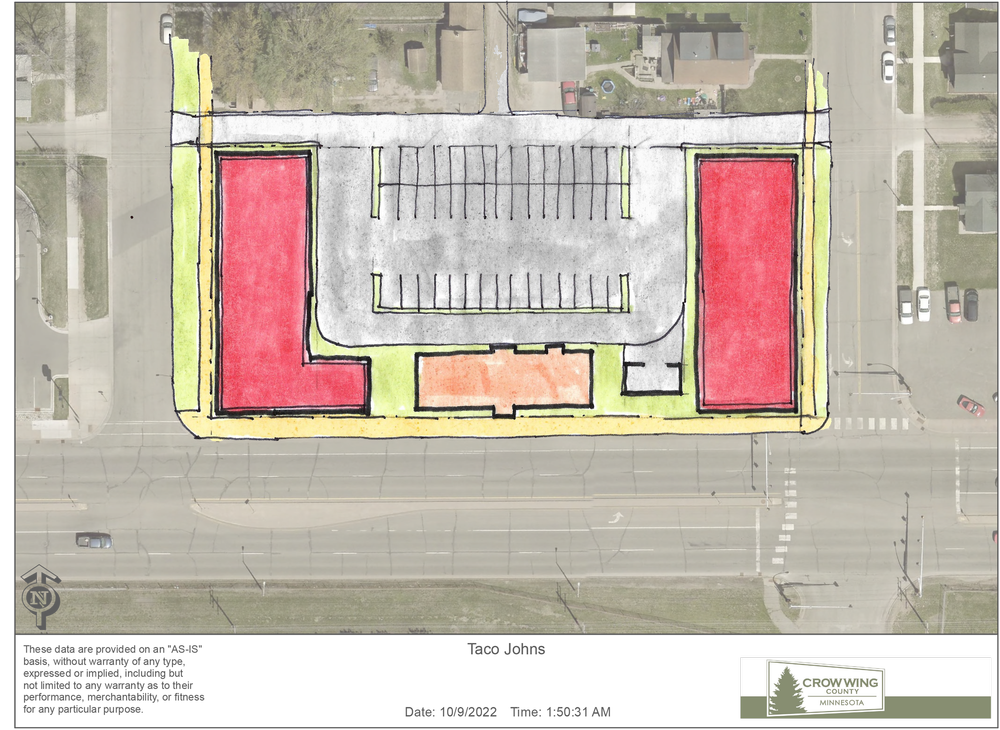The Top 3 Strong Towns Articles and Podcasts from 2022: John's Picks
This year, we published several hundred articles and some 150 podcasts. From among such a massive output it is challenging to pick out just three or four favorites. But it sure was fun to try. It gave me an excuse to look back on 2022, to revisit many pieces, and to read a few that I somehow missed the first time around. As you’re looking for something to read or listen to over the holidays, I’d like to add these suggestions to the recommendations you’ve already received from my other colleagues, Norm, Lauren, Daniel, and Shina. Merry Christmas and Happy Holidays!
(Source: Regrid/Betsy Cooper.)
1. The Just Accounting for Health Series
Most local governments rely on property taxes as a major source of public revenue. Property taxes help fund road construction and maintenance, improvements to water and sewer systems, and the community’s schools and libraries. Taxes on a property also support the police and fire services that protect that property. Yet what makes a strong town isn’t only that it has the revenue to pay for essential services; it matters where that money comes from. Property tax systems shouldn’t only be adequate—they should also be fair, transparent, and financially productive.
Early this year, Strong Towns partnered with Urban3 and others to launch Just Accounting for Health. This 18-month project is shedding light on the property tax assessment system in Western North Carolina. Drawing on Urban3’s pioneering fiscal analysis, we have published 18 articles (and counting) on the impact of the property tax assessment process on the health and functionality of North Carolina communities. Opaque and unfair property tax assessments aren’t only a problem in Western North Carolina. The same problems can be found across the United States. Bottom line: smaller, lower-cost homes are being overvalued, while larger, higher-cost homes are being undervalued. This affects the physical and social well-being of residents. It also promotes a suburban development pattern that is draining the communities’ financial strength and vitality.
One of the best things about working for Strong Towns is that I get to learn on the job. Before the Just Accounting project, I didn’t think much about property tax assessments. But following this series—most of which written by my talented colleague Seairra Sheppard—has pulled back the veil.
(Source: Norman Van Eeden Petersman.)
2. “Want to Build Community on Your Street? Just Hit ‘Print’!” by Norman Van Eeden Petersman
From a long-term series that will span 18 months and many thousands of words, to a short piece that tells a simple but inspiring story. This is one reason I love the Strong Towns movement. It’s more than just some good ideas about how to make our places safer, more resilient, more livable, and more inviting. It’s those ideas put into action, in hundreds of different communities around North America and by thousands of people from all walks of life.
In this article, Strong Towns Member Advocate Norman Van Eeden Petersman recounts his family’s experience throwing a block party in their neighborhood in Delta, British Columbia. Norm’s family printed invitations and hand-delivered them to neighbors. It was to be the neighborhood’s first block party in at least four decades. They estimated 15 people would come; instead, more than 40 arrived! What I especially appreciate about Norm’s story is its reminder that building community doesn’t have to be elaborate or grand. (In fact, waiting for a “perfect” plan is almost a guarantee that you’ll never get started.) Building your strong town can be as complex as reforming property tax systems. It can also be as straightforward as making an invitation, then hitting “print.”
3. “Tim Soerens: Reconnecting Churches with Their Neighborhoods,” from the Strong Towns Podcast
My favorite podcast of the year was the very first podcast of the year: Chuck’s conversation with Tim Soerens, cofounder of the Parish Collective, a network of place-based churches around the world. I know Tim well, and my wife and I has been involved with the Parish Collective for more than a decade. That’s not a disclaimer but rather personal testimony to the good work being done by Tim and his family in Seattle’s South Park neighborhood and beyond.
In this episode, Chuck and Tim talk about the vital role churches can play in building strong towns and cities. Tim describes the origin story of the Parish Collective, an international movement that now includes hundreds of churches and faith communities who are asking themselves, “How do we begin to take holistic responsibility for the place where we live?” Strong Towns is a secular organization, but this conversation will be of interest to all Strong Towns advocates, no matter their religious leanings. It can give people of faith an imagination for how their churches, mosques, synagogues, and temples can help weave a fabric of care in their neighborhoods. And it can help non-religious advocates see (perhaps for the time) faith communities as potential allies in their work toward the common good. What’s more, Tim’s prescription for change-making—focus on a particular place, over a long period of time—is as relevant for, say, a Local Conversation as it is for a church.
Like what you hear in this conversation? Listen to this interview my colleague Rachel Quednau did in 2021 with Coté Soerens, Tim’s wife, about her community-strengthening coffee shop in South Park. Then check out Rachel’s interview with De’Amon Harges, the “roving listener” in Indianapolis, as mentioned by Tim. Finally, don’t miss Chuck’s discussion with Majora Carter. Carter is an urban revitalization strategist, the author of Reclaiming Your Community, and a member of the Parish Collective board.
(Source: Addison Del Mastro.)
Bonus: “Taco John’s 2.0,” by Edward Erfurt
It’s been more than a decade since Strong Towns Founder Chuck Marohn first published his now classic article, “The Cost of Auto Orientation.” In that piece, Chuck compared the financial productivity of two near-adjacent developments in his hometown of Brainerd, Minnesota. One block that retained its traditional development pattern had been labeled as “old and blighted.” The second, otherwise identical block had been redeveloped in an auto-oriented development style for a new Taco John’s restaurant. Chuck demonstrated that the blighted traditional block was 40% more financially productive than the auto-oriented block. We occasionally revisit this case study, and it has inspired others to conduct value-per-acre analyses in their own towns.
This October, one of my newest colleagues, Edward Erfurt, took a second look at the Taco John’s study. A trained architect and former city planner, Edward showed where the car-oriented development was leaking productivity and making the neighborhood less safe. Then he went one step further and showed how the Taco John’s property could have been developed in such a way that it would have tripled its productivity, all while making the neighborhood safer and more inviting. Edward’s suggestions aren’t complicated. Rather, they are based on time-tested urban design principles. It makes me think: Maybe it’s easier to build strong towns than it is to build weak ones.








In Baltimore, some of the city’s least wealthy individuals may be overpaying on their property taxes by nearly $300 a year, whereas some of the richest could be underpaying by $14,000 or more.